Lisbon, Portugal: Towers, Monasteries & Nun’s Bad Habits (Inter Railing Part 2)
After my enchanting day and night in picturesque but small Coimbra, the tempo increased several notches upon my arrival in Lisbon, Portugal's thriving capital.
Home to over three million people, it's no surprise that Lisbon's centre exudes a big-city feel – with large old buildings that match the grandeur and grace of anything in London or Paris. Indeed, since Portugal is such a small country, I was taken aback by its capital's size as soon as I exited Rossio Station (Estação de Caminhos de Ferro do Rossio). This was no sleepy city: its citizens rushed around with as much gusto as anywhere else in Europe.
The station opens directly onto Rossio Square, the popular name for Praça de D. Pedro IV (the locals never took to the official title, despite it being in place for a couple of centuries). This fine square was to be a landmark for me while I explored the city, because as I was to discover, it's easy to get lost in Lisbon.
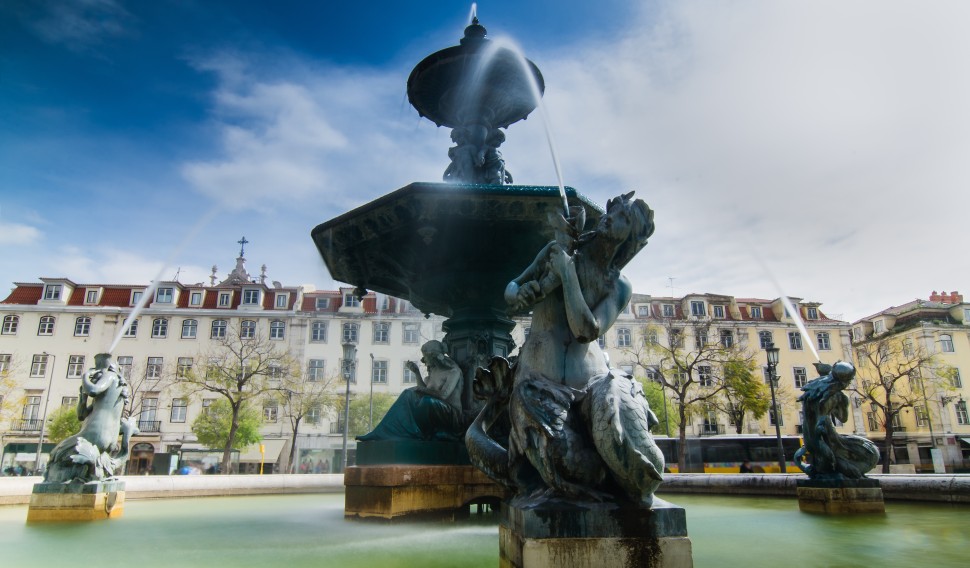 Fountain in Rossio Square, Lisbon, Portugal
Fountain in Rossio Square, Lisbon, Portugal
I had booked a guest house – or pension – a little distance from the square, because I didn't want to get lost – at least not on my first day – or rely on the city's notoriously dishonest taxi drivers. Cabbies were prone to overcharging tourists greatly, sometimes by a factor of ten!
Because I wanted a central room, I had to pay more than in Porto or Coimbra, but I discovered that it wasn't just a great location I was getting – it was also a very pleasant room. It was only graded two stars by the website I had booked it on, but I think in the UK the same room would be regarded as a three star.
The room couldn't be called modern, but it did boast a pair of very elegant wooden bedside tables upon which sat brassy lamps. These flanked a matching wooden bed, neatly made up with fresh white linen. On each pillow was stitched the word ‘saudade', which I thought meant something like ‘welcome'. However, I later found out that the word had no direct translation in English, but meant something a kin to ‘a deep nostalgic or melancholic mood.' I wasn't sure why such a word was on my pillows!
But there were more surprises. I peered out of the window and realised I could clearly see a large section of Rossio Square. It was a fantastic, lofty view over a key part of the city. I seemed to have hit the jack pot with this room.
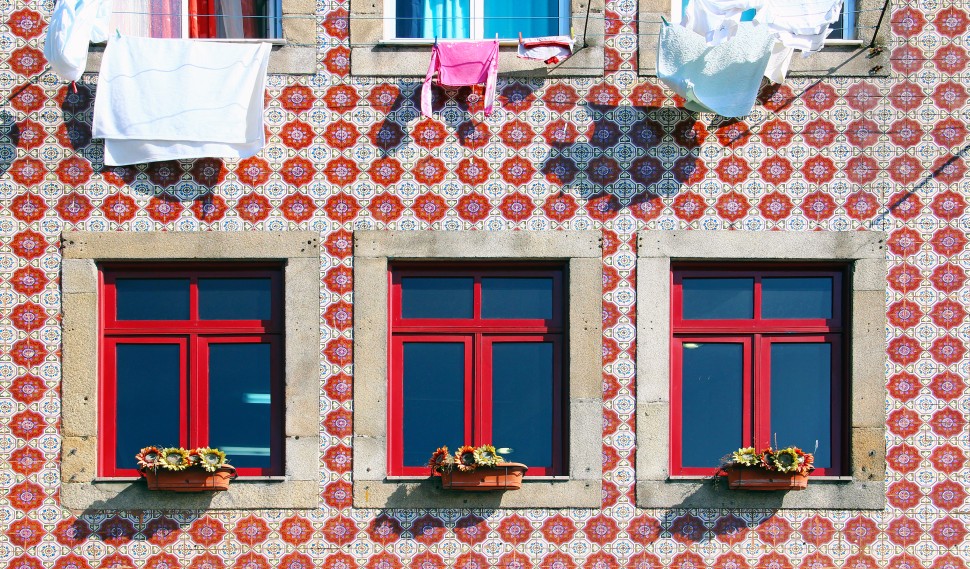 Houses of Lisbon, Portugal
Houses of Lisbon, Portugal
I had two days booked in Lisbon – more than both Porto and Coimbra – but I didn't want to waste them. So I struck out into the hot, bustling city and found a bus heading for Belem district, where numerous monuments awaited. Within half an hour I was standing in front of the beautiful 16th century Belem Tower. This gleaming limestone building sits at the edge of the Tagus River, originally intended to help defend Lisbon from attackers. It looked wonderful against the azure blue sky.
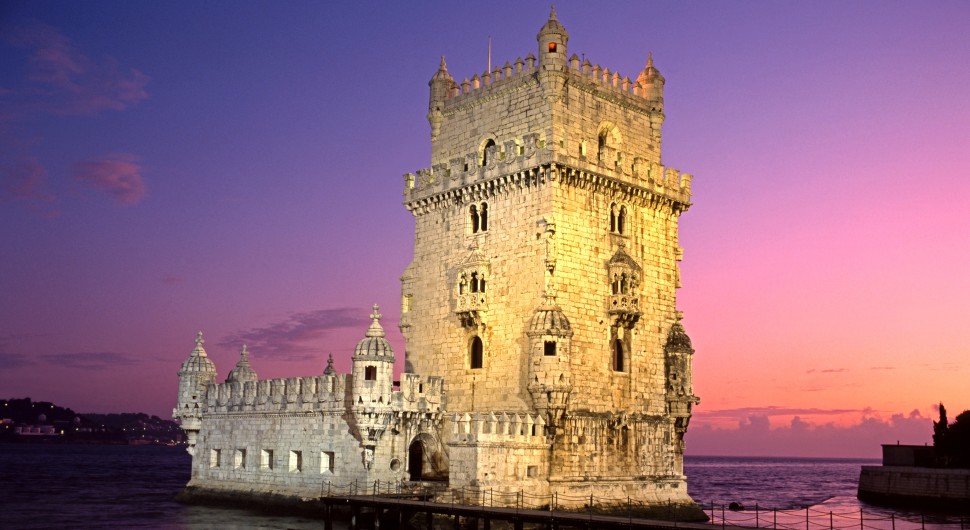 Tower of Belem, Lisbon, Portugal (ArenaPhotoUK/Bigstock.com)
Tower of Belem, Lisbon, Portugal (ArenaPhotoUK/Bigstock.com)
Here I bought a ticket that allowed me entry to both the tower and the Jeronimo's Monastery - I don't recall the price at the time, but the current cost is 12 euros. The age and beauty of the tower's spiral staircase was a little lost on me, since there were so many other tourists going up and down. This was despite the fact that a little buzzer went off every couple of minutes signalling that the next person could go up. There appeared to be no one in control except for the guy taking the ticket money – of course! The views were decent, but I think the best way to enjoy the tower is to look at it from the outside. If you do go to Belem Tower, I recommend going early in the morning – there were simply too many people there when I arrived.
After a 15 minute walk from the tower I found Jeronimos Monastery, where - after a fairly long queue - my combined ticket successfully gained me access to the whole complex.
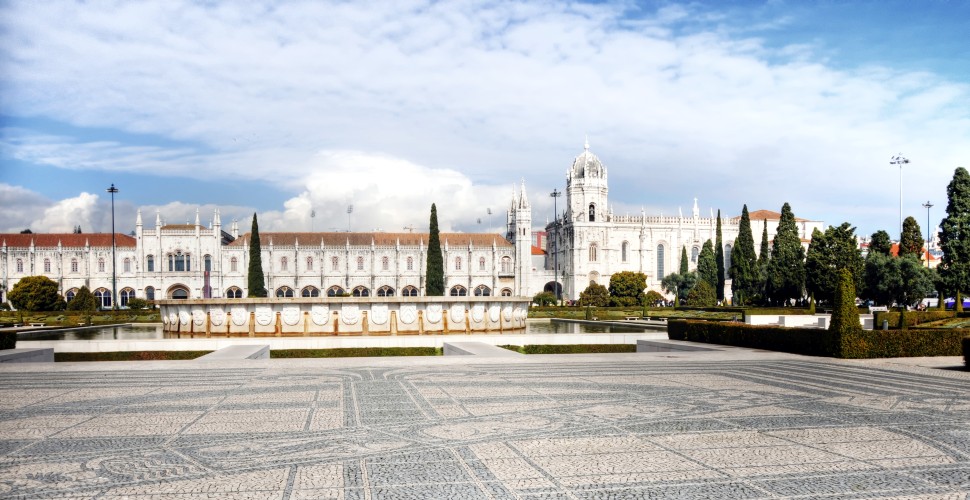 Jeronimo's Monastery, Lisbon, Portugal
Jeronimo's Monastery, Lisbon, Portugal
If you are an architecture enthusiast, this place will surely amaze you. I was surprised I had never heard of this church before – such was its beauty. Once again, this being June and summertime, there were many tourists snapping photos and generally making it hard to see anything, but the place was still impressive. And once I found the old cloister I did manage to get some peace and quiet – definitely worth seeking out if the hustle and bustle of Lisbon is becoming a pain.
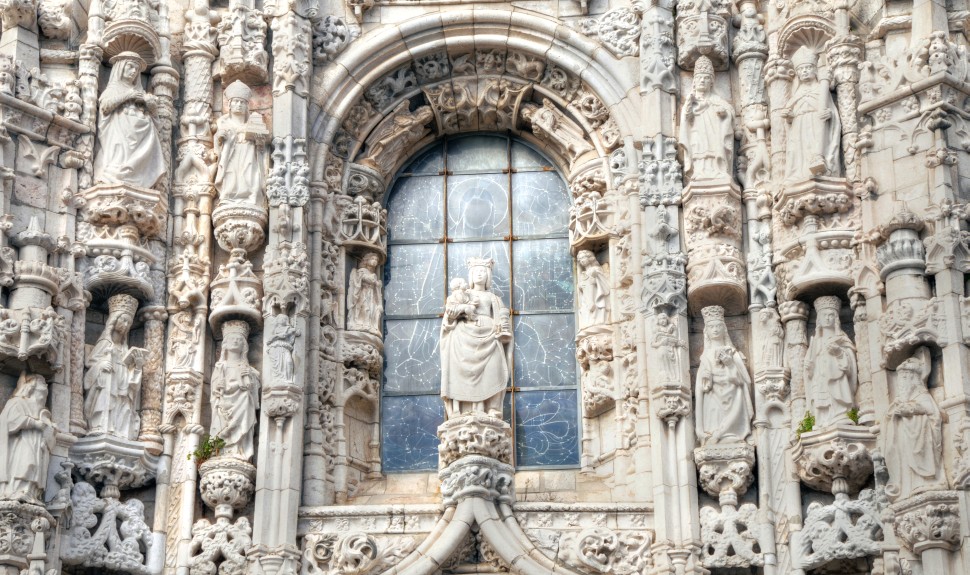 Jeronimo's Monastery, Lisbon, Portugal
Jeronimo's Monastery, Lisbon, Portugal
After a good bit of sightseeing, I was ready for some food. This being the capital I thought I would find some vegetarian fare easily, but after my bus ride back towards Rossio square, it took me some time to find a suitable menu. Finally, I sat down in a street café and ordered tomato soup and a cheese plate – but it was not these I had my stomach set on. I was gunning for some of the amazing looking desserts which were listed with dazzling photos. After the savouries, which I washed down with some more good quality Portuguese red, I ordered Papo de Anjo, which meant "angel's double chin”. It was a delicious treat made from egg yolks and syrup - well worth the wait. I discovered later that Portuguese nuns had created Papo de Anjo many centuries before, along with many other egg yolk based sweets. Legend has it that the nuns used a great many egg whites to starch their habits - and therefore had to dream up ways to use the many egg yolks!
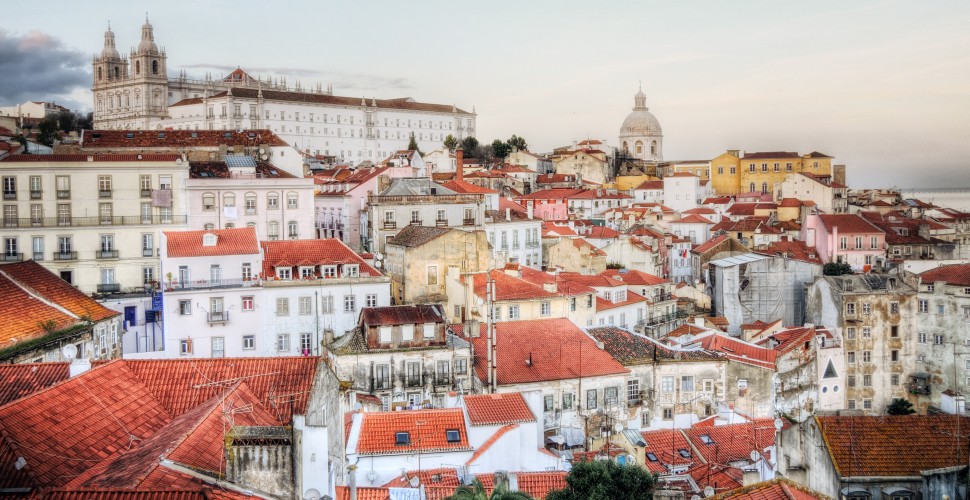
With my stomach as full as a Lisbon nun's, I settled up and wandered the darkening streets of the Portuguese capital. I found a long, quiet bar where old Lisbon men nursed their beers, wreathed in cigarette smoke. I sank two wonderfully cold Super Bocks before the smoke and tiredness drove me back to my two star room (disguised as a three star) for a well-earned sleep.
Get a Quote